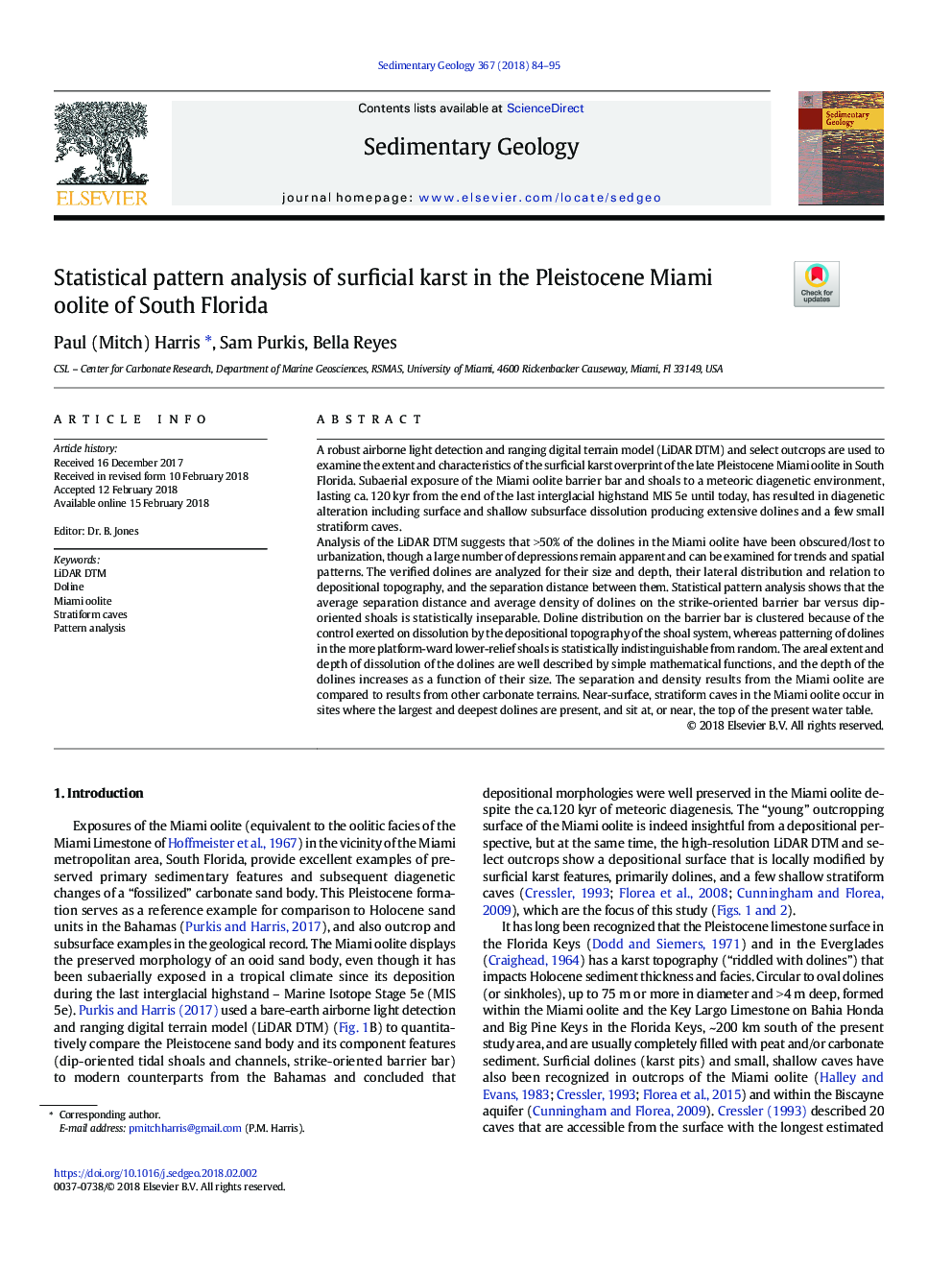| Article ID | Journal | Published Year | Pages | File Type |
|---|---|---|---|---|
| 8908524 | Sedimentary Geology | 2018 | 12 Pages |
Abstract
Analysis of the LiDAR DTM suggests that >50% of the dolines in the Miami oolite have been obscured/lost to urbanization, though a large number of depressions remain apparent and can be examined for trends and spatial patterns. The verified dolines are analyzed for their size and depth, their lateral distribution and relation to depositional topography, and the separation distance between them. Statistical pattern analysis shows that the average separation distance and average density of dolines on the strike-oriented barrier bar versus dip-oriented shoals is statistically inseparable. Doline distribution on the barrier bar is clustered because of the control exerted on dissolution by the depositional topography of the shoal system, whereas patterning of dolines in the more platform-ward lower-relief shoals is statistically indistinguishable from random. The areal extent and depth of dissolution of the dolines are well described by simple mathematical functions, and the depth of the dolines increases as a function of their size. The separation and density results from the Miami oolite are compared to results from other carbonate terrains. Near-surface, stratiform caves in the Miami oolite occur in sites where the largest and deepest dolines are present, and sit at, or near, the top of the present water table.
Keywords
Related Topics
Physical Sciences and Engineering
Earth and Planetary Sciences
Earth-Surface Processes
Authors
Paul (Mitch) Harris, Sam Purkis, Bella Reyes,
